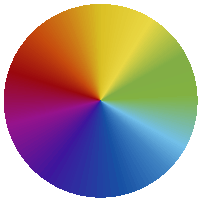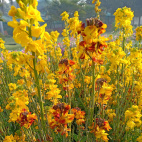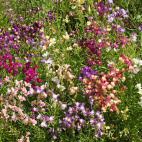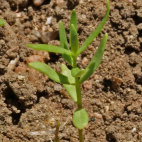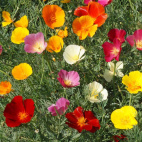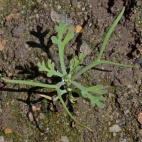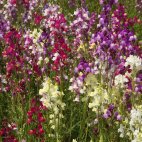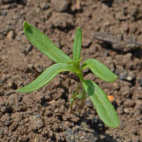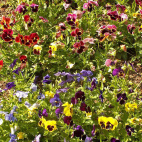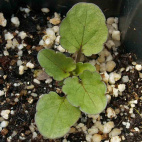Color
Availability
USDA Zone
Region
Type
Duration
Season
Germination
Soil
Sunlight
Height
Use
Narrow Your Search
Color
Availability
USDA Zone
Region
Type
Duration
Season
Germination
Soil
Sunlight
Height
Use
Wildflower Seeds - California Region
The wildflower species listed in the California Region are those that would grow well in the Central Valley as well as the coastal areas of Southern California. If you are in the mountains you might want to check out the Mountain Region, or if you are in the desert areas in the south, you'll want to look at the Dry West Region. The species of bulk wildflowers listed on this page are those that are either native here, or are annuals that grow well in this zone. There are hundreds of bulk California wildflower seeds to choose from, so please use the filters along the left side of the screen to narrow your search to match your soils, lighting, and any other attributes that you may want. If you are looking for something that is strictly native to your immediate area, you can check out the distribution map that is found on the detail pages of most of the species.
-
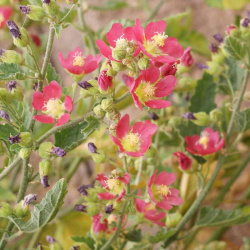 Desert Globemallow Seeds
Sphaeralcea ambigua
Native to the American southwest and Mexico, this shrub bears beautiful blossoms that vary in color from pink to orange. This tough little perennial grows well in poor soil and can handle the intense heat and drought of the desert southwest, making it an ideal plant for xeriscaping.Quick Viewx
Desert Globemallow Seeds
Sphaeralcea ambigua
Native to the American southwest and Mexico, this shrub bears beautiful blossoms that vary in color from pink to orange. This tough little perennial grows well in poor soil and can handle the intense heat and drought of the desert southwest, making it an ideal plant for xeriscaping.Quick ViewxDesert Globemallow Seeds
Sphaeralcea ambigua
Native to the American southwest and Mexico, this shrub bears beautiful blossoms that vary in color from pink to orange. This tough little perennial grows well in poor soil and can handle the intense heat and drought of the desert southwest, making it an ideal plant for xeriscaping.
$3.48 Pkt - $20.16 / Oz -
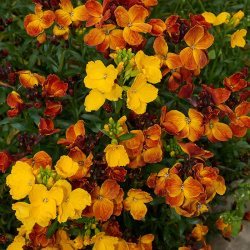 English Wallflower Seeds
Cheiranthus cheiri
This old English favorite pops up in castle ruins, roadsides, or any bit of rocky soil near the sea. The phlox-like orange blossoms also give off a pleasant fragrance.Quick View$2.98 Pkt - $8.46 / Oz
English Wallflower Seeds
Cheiranthus cheiri
This old English favorite pops up in castle ruins, roadsides, or any bit of rocky soil near the sea. The phlox-like orange blossoms also give off a pleasant fragrance.Quick View$2.98 Pkt - $8.46 / Oz -
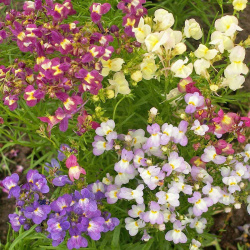 Fairy Bouquet Snapdragon Seed Mix
Linaria maroccana
Plant a fairytale garden with these dainty jewel-like beauties. This delightful annual is popular for containers or borders and makes an excellent cut flower as well. It is easy to grow and does not take up much space in the garden.Quick View$2.98 Pkt - $8.93 / Oz
Fairy Bouquet Snapdragon Seed Mix
Linaria maroccana
Plant a fairytale garden with these dainty jewel-like beauties. This delightful annual is popular for containers or borders and makes an excellent cut flower as well. It is easy to grow and does not take up much space in the garden.Quick View$2.98 Pkt - $8.93 / Oz -
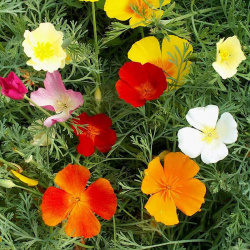 California Poppy Seed Mix
Eschscholzia californica
Can't decide which color of California Poppy seeds to buy? Experience a dazzling array of different colors with a carpet of this California Poppy mix. This mix is very easy to grow and is great for beginning gardeners.Quick View$2.98 Pkt - $8.46 / Oz
California Poppy Seed Mix
Eschscholzia californica
Can't decide which color of California Poppy seeds to buy? Experience a dazzling array of different colors with a carpet of this California Poppy mix. This mix is very easy to grow and is great for beginning gardeners.Quick View$2.98 Pkt - $8.46 / Oz -
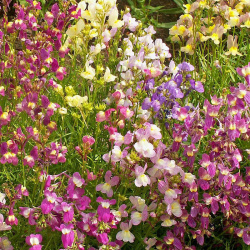 Northern Lights Snapdragon Seed Mix
Linaria maroccana
This exquisite annual will transform a meadow into a shimmering sea of color. Also popular for containers, this mix includes white, rose, lilac, yellow, orange, and crimson flowers. Every flower garden needs a few Snapdragons!Quick View$2.98 Pkt - $8.46 / Oz
Northern Lights Snapdragon Seed Mix
Linaria maroccana
This exquisite annual will transform a meadow into a shimmering sea of color. Also popular for containers, this mix includes white, rose, lilac, yellow, orange, and crimson flowers. Every flower garden needs a few Snapdragons!Quick View$2.98 Pkt - $8.46 / Oz -
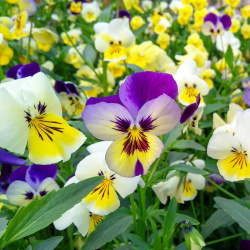 Swiss Giants Pansy Seed Mix
Viola wittrockiana
Worthy of a Swiss window box, these impressive blooms come in a brilliant array of color. This compact plant is technically a perennial but is often grown as an annual. The flowers are edible and can be used as garnishes, or in salads.Quick View$3.48 Pkt - $30.00 / Oz
Swiss Giants Pansy Seed Mix
Viola wittrockiana
Worthy of a Swiss window box, these impressive blooms come in a brilliant array of color. This compact plant is technically a perennial but is often grown as an annual. The flowers are edible and can be used as garnishes, or in salads.Quick View$3.48 Pkt - $30.00 / Oz
The wildflower species listed in the California Region are those that would grow well in the Central Valley as well as the coastal areas of Southern California. If you are in the mountains you might want to check out the Mountain Region, or if you are in the desert areas in the south, you'll want to look at the Dry West Region. The species of bulk wildflowers listed on this page are those that are either native here, or are annuals that grow well in this zone. There are hundreds of bulk California wildflower seeds to choose from, so please use the filters along the left side of the screen to narrow your search to match your soils, lighting, and any other attributes that you may want. If you are looking for something that is strictly native to your immediate area, you can check out the distribution map that is found on the detail pages of most of the species.
